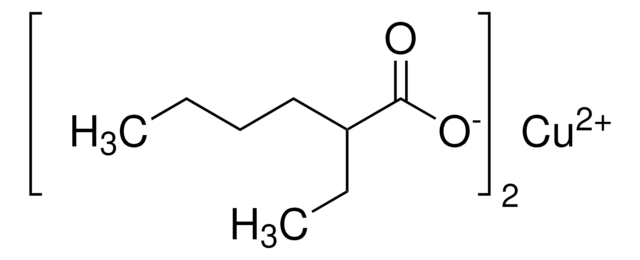E-036
Ethanol-400 (10 ampules/kit)
400 mg/dL in H2O, ampule of 10 × 1.2 mL, certified reference material, Cerilliant®
Sinonimo/i:
Ethanol solution, Ethyl alcohol
About This Item
Prodotti consigliati
Grado
certified reference material
Forma fisica
liquid
Caratteristiche
Snap-N-Spike®/Snap-N-Shoot®
Confezionamento
ampule of 10 × 1.2 mL
Produttore/marchio commerciale
Cerilliant®
Concentrazione
400 mg/dL in H2O
tecniche
gas chromatography (GC): suitable
liquid chromatography (LC): suitable
applicazioni
forensics and toxicology
Formato
single component solution
Temperatura di conservazione
2-8°C
Stringa SMILE
CCO
InChI
1S/C2H6O/c1-2-3/h3H,2H2,1H3
LFQSCWFLJHTTHZ-UHFFFAOYSA-N
Cerchi prodotti simili? Visita Guida al confronto tra prodotti
Descrizione generale
Applicazioni
- Ethanol-400 in fluorescence studies: Ethanol-400′s role in the synthesis of new phenothiazine-based fluorescent dyes highlights its critical use as a solvent that supports the development of compounds with unique properties like aggregation-induced emission and enhanced antibacterial activity, offering insights into material science applications (El-Sedik et al., 2024).
Note legali
Prodotti correlati
Codice della classe di stoccaggio
12 - Non Combustible Liquids
Classe di pericolosità dell'acqua (WGK)
nwg
Punto d’infiammabilità (°F)
Not applicable
Punto d’infiammabilità (°C)
Not applicable
Certificati d'analisi (COA)
Cerca il Certificati d'analisi (COA) digitando il numero di lotto/batch corrispondente. I numeri di lotto o di batch sono stampati sull'etichetta dei prodotti dopo la parola ‘Lotto’ o ‘Batch’.
Possiedi già questo prodotto?
I documenti relativi ai prodotti acquistati recentemente sono disponibili nell’Archivio dei documenti.
I clienti hanno visto anche
Articoli
Development and validation of a headspace SPME and GC-MS method to determine alcohol content in twenty different Kombucha tea samples.
Il team dei nostri ricercatori vanta grande esperienza in tutte le aree della ricerca quali Life Science, scienza dei materiali, sintesi chimica, cromatografia, discipline analitiche, ecc..
Contatta l'Assistenza Tecnica.

